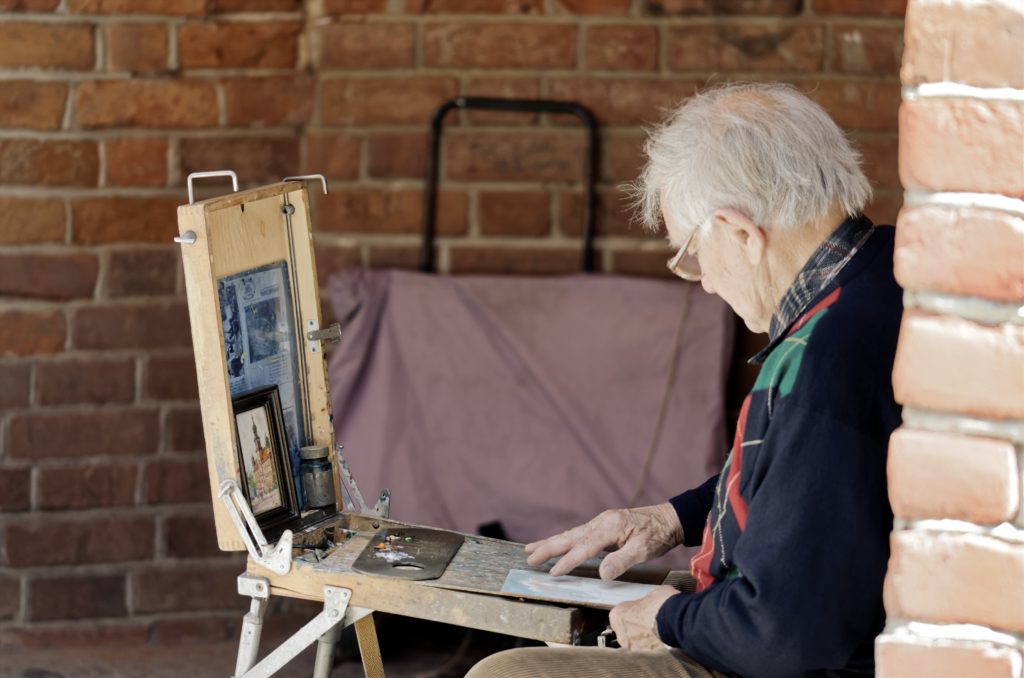With the COVID-19 virus upon us, millions of people around the world are taking precautions to self-isolate in their homes. Because many care homes and hospitals are closed to visitors and the risks of the virus to seniors are high, there are many older adults without much social contact during this time. For those physically separated from a senior parent or loved one, it can be worrisome to think of them becoming lonely, anxious, or withdrawn. Thankfully, there are things you can do to support the socially isolated or quarantined senior in your life. I’ve listed some suggestions below for keeping your elder loved ones connected and stimulated during this challenging time. Remember, we’re in this together!
IF THEY HAVE PHONE ACCESS
Call them

First of all, if your senior loved one has hearing capabilities and access to a phone, call them! We’re so accustomed to texting and emailing each other, but it can make a world of difference just to hear a familiar voice. For seniors with dementia/Alzheimer’s or memory challenges, your calls may get forgotten over the course of the day and it may be beneficial to reach out more often.
Sing/listen to music

It’s true that nothing connects people quite like music. If your senior loved one can hear, try playing their most beloved music on speakerphone for you to listen to together. If you are open to utilizing your vocal abilities, try singing to/with them for an even stronger connection. Here’s a list of popular songs from past decades for some inspiration.
Reminisce

Reminiscence can certainly be sparked by playing/singing music, as mentioned above, but you can also find other opportunities to reminisce with your elder loved one. Is there a dessert recipe your grandmother used to bake on special occasions? A car your uncle fixed up proudly? How about a memorable family trip you took with your mum? There are so many ways to prompt conversation topics on reminiscence; I use Table Topics with my clients – here are some sample questions to get you going.
Play telephone “I Spy”

Remember the “I Spy” game? Traditionally, you’re in the same place with a person when playing, and the object is to get them to guess the “something green,” “something square,” etc. that you see. This can be adapted for phone use and is a great way to connect and get creative with your loved one. Challenge your older adult over the phone by saying that you see “something green” (sub in the colour/shape/ of your choosing) in your home or out your window and ask if they can find something in their field of view that’s similar. Encourage them to search out their window or get on their balcony for some fresh air to look, if possible. For seniors with vision challenges, try using the “I Feel” prompt instead, and have them touch for something fuzzy, round, smooth, etc. in their reach – be creative!
Read to them

Nothing makes me more nostalgic than the memory of being read to as a child; I think there’s something calming about a loved one confidently guiding you through a story. If the isolated senior in your life can maintain attention, try reading a short story or poem to them. If they don’t have a favourite, Reader’s Digest always has heartwarming bite-size stories I love to share with my elderly clientele. You can also start a new book together, reading a chapter or two at a time over the phone.
Guide them in gentle exercise

Sitting inside alone can often lead to a decline in physical activity and mobility. To prevent your loved one from becoming too sedentary, you can try guiding both of you through a gentle exercise routine over the phone. You may encounter resistance to this but attempt to cater your introduction to their particular motivation style. For example, if they’re motivated by authority and prescription, try saying your physiotherapist gave you an incredibly effective at-home exercise that they simply must try! If connection and closeness motivates them, try saying that this is something you’re wanting to share and do together. Here are some examples of simple seated exercises for seniors.
Share and encourage day planning

When we’re in isolation, it can be easy to go about our day without much structure or thought put towards daily plans. For me, it’s been helpful to check in with friends and family and ask about their plans for the day. Often, their baking, patio rearranging, craft projects, etc. prompt me to add in plans for my own day. Sharing can be a great way to nudge your senior loved one into thinking about the structure of their next 12 hours and how they want to spend it. Perhaps just one new task will come out of it, but the mutual accountability that comes from day sharing can make a big difference. Encourage them to engage in the hobbies they typically enjoy, whether it’s knitting, doing puzzles, word searches, yoga, baking, etc. *Tip: try asking your loved one for advice on a task/plan you have for the day – people appreciate being asked for their opinion, and it can lead to a more fruitful conversation.
IF THEY HAVE INTERNET ACCESS
Start an email chain

If your senior loved one has access to the internet and is able to use a computer/tablet, why not start a family group email chain where everyone can keep in touch during the outbreak? Share photos, videos, memories, fun tidbits about your day – anything to keep connected and positive!
Video chat

Even better than a phone call or email would be the opportunity to video chat! If both you and your loved one have the technology available, try scheduling regular video calls using something like FaceTime, Skype, Zoom, Facebook Messenger, WhatsApp, etc. Here’s a handy guide to video calling with family. All of the above suggestions in the phone access section can be done via video for an even better connection. *Tip: some of the long-term-care homes where my clients live are offering to facilitate video calls with loved ones during the COVID-19 outbreak. I’d suggest investigating this if your senior lives in a care facility.
Watch YouTube videos

Even when not in isolation, I turn to YouTube often for a dose of animal cuteness, guided meditation, or general positivity. There are countless videos on YouTube, and if the senior in your life has the means, you can guide them to watch videos of their interest easily. I’m a fan of using the following YouTube channels with my senior clients: The Dodo for heartwarming animal videos, Crash Course for learning about anything from biology to literature, Nature Relaxation for high definition nature escapism, and Tim’s for train journeys.
Stream movies or shows

From Netflix and Disney+ to Amazon Prime Video and Google Play, there are many streaming services available to watch movies and shows of your choosing. If your elderly loved one has a streaming service set up already or it’s possible to guide them through the process, watching something that brings them joy can be a great way to pass the time. In book club fashion, you can also both commit to watching something and then reconvene to chat about it at a later time.
IF THEY HAVE AN ON-SITE CARE PARTNER
Facilitate family communication

If your senior loved one has a personal support worker or caregiver that is continuing to see them during this time, they can be a significant ally in your connecting with your loved one. The caregiver can them help set up a phone or video call, support them in responding to emails, help with finding videos/shows to watch, etc. Speak to your loved one’s caregiver to plan out ways to connect when you can’t be there.
Encourage activity

Along with helping facilitate communication, caregivers can support your senior loved one in pursuing their interests and hobbies while in isolation. Setting up a jigsaw puzzle, prepping their camera, arranging baking supplies, or simply reminding them of their activities can go a long way.
OTHER
Facilitate care package drop-off

I was recently inspired to hear about someone delivering personalized – and well-sanitized – care packages to their friends and loved ones. What a fantastic idea! If it’s safe and feasible to do so, consider dropping off some packaged goodies for the senior in your life (just make sure you’re using gloves and ensuring proper hand hygiene when packing).
Facilitate food delivery, if appropriate

A friend of mine helped set up a no-contact meal delivery for his elderly parents during the virus outbreak in order to reduce their need to leave the house for groceries (food is paid for in advance and is left at their doorstep). There are certainly pros and cons to food delivery during an outbreak, and it’s important to weigh your loved one’s risks and benefits for using such a service, but it’s good to have options.
Regardless of what you choose to do to connect with the socially isolated senior in your life, know that any attempt at outreach helps and no gesture is too small. Remember, we’re in this together!
Though I could make additions to this list indefinitely, my expertise truly lies in helping individuals on a 1:1 basis do the things that bring them joy. That could mean almost anything for anyone, and so my job is to find what “lights someone’s fire” and help them achieve it despite any limitations. If you have an aging loved one who is experiencing barriers to fulsome participation in leisure, and you need support getting them involved in meaningful activity, I’m here to help. If you have any questions about Life in Full Recreation Therapy or want to schedule a free consultation (once social isolation measures are lifted!), connect with me here – I’d love to hear from you.
– Kim
